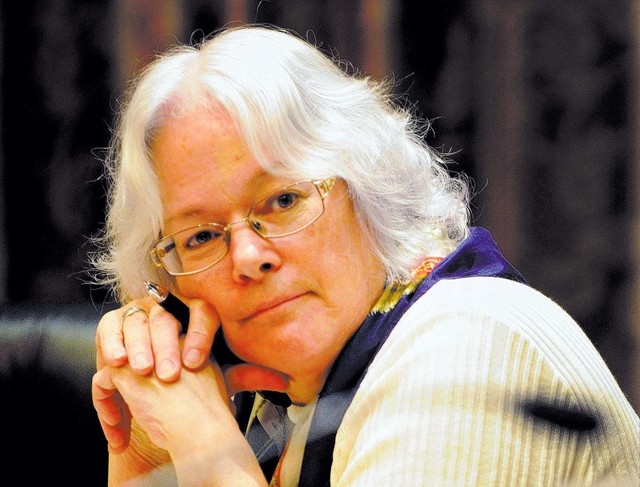Clark County School Board delays decision on seeking property tax increase

Gun-shy about asking voters for another property tax increase after hearing a resounding 2-to-1 “No” 15 months ago, the Clark County School Board on Thursday balked at deciding whether to repeat the request on November’s ballot.
“The longer we wait to make a decision, the clearer it is to me that we’re asking in 2016,” said board member Carolyn Edwards after district staff listed the pros and cons of a ballot question in 2014 versus 2016. “No decision is a decision.”
Staff also ran through a list of why the ballot question failed so overwhelmingly in November 2012.
The recession.
Lack of trust in elected officials and the district’s claimed “need.”
Several board members agreed that they didn’t give themselves enough time to make the case to voters by waiting until Feb. 9, 2012, to decide to pose the ballot question.
The board was only four days away from the same situation on Thursday when it had its first discussion on the possible ballot question, meaning it probably will come to a decision even later than it did in 2012.
“Let’s make the decision, 2014 or not,” board member Deanna Wright said.
Considering Thursday’s non-decision and staff’s pros-and-cons lists favoring 2016, it seems likely that voters won’t face the question for another two years. For that election, voter turnout is expected to be higher because of the presidential race and the district probably won’t be up against another tax initiative for schools.
The teachers union Nevada State Education Association is pushing for a business margins tax in 2014 that would fund schools. Higher turnout favors education initiatives, Associate Superintendent and district lobbyist Joyce Haldeman said.
But the district is in desperate need of capital funds — not provided by the federal or state governments — to replace schools’ failing equipment and build campuses for expected growth, according to district Chief Financial Officer Jim McIntosh.
He asserted that “conservatively” the district needs $5.3 billion to cover the capital costs of its 357 schools and building new schools over the next decade.
He said $160 million to $200 million a year would be used to replace school systems, such as industrial-sized air conditioners, which are beyond repair. That amount comes to about $2 billion over a decade.
The majority of the $5.3 billion need is to improve school infrastructure to current standards, replace aging schools, build new schools and upgrade classroom technology, McIntosh said.
A new elementary school costs $25 million. A middle school costs $45 million, and comprehensive high schools run about $105 million.
The greatest need for new construction is for elementary schools, which are now 13 percent over their maximum student capacities, on average. If a new elementary were to open today in a crowded area, it already would meet the district’s crowding triggers to switch to a year-round academic year to fit all of the zoned students, McIntosh said.
However, $5.3 billion is aiming high.
A successful bond initiative would provide $1.3 billion over a decade, a quarter of the $5.3 billion needed, if successful in 2014, McIntosh said. A 2016 bond initiative would provide an estimated $2.1 billion because the district will have less debt to pay off at that time, he said.
Despite more money, waiting until 2016 means a new school wouldn’t be opened until 2021 if county voters support the bond, McIntosh warned.
What will the district do in the meantime to curb school crowding and keep schools with failing systems open, Edwards asked.
Will students of schools closed for safety reasons, such as a non-functioning air conditioners, attend a nearby school at night?
“If we don’t have a plan in place, we’re in trouble,” she said.
Previously, the district used $4.9 billion from another bond — approved in 1998 — to build 101 new schools and 11 replacement schools over a decade, accommodating the boom of students during that time period. The district grew from 203,000 students to 311,000 students during that decade.
Only $47.3 million of that bond revenue remains, which “isn’t a whole lot of money for a district our size,” McIntosh said.
Currently, the district has approximately 315,000 students, and officials are expecting the flatlined enrollment of the past few years to end as new housing developments come online.
A school’s student capacity can be increased 20 percent by switching to a year-round academic calendar. But year-round schools cost $308,000 more a year to run, board member Patrice Tew said.
That money probably would come out of the district’s operating budget, meaning fewer resources in the classroom, according to district staff.
“This is ‘damned if you do, damned if you don’t,’ ” Tew said of the choice between 2014 and 2016 ballot questions.
However, a worsening situation of more year-round and aging schools could result in more favorable chances for a ballot question in 2016, noted several district officials.
Contact reporter Trevon Milliard at tmilliard@reviewjournal.com or 702-383-0279.